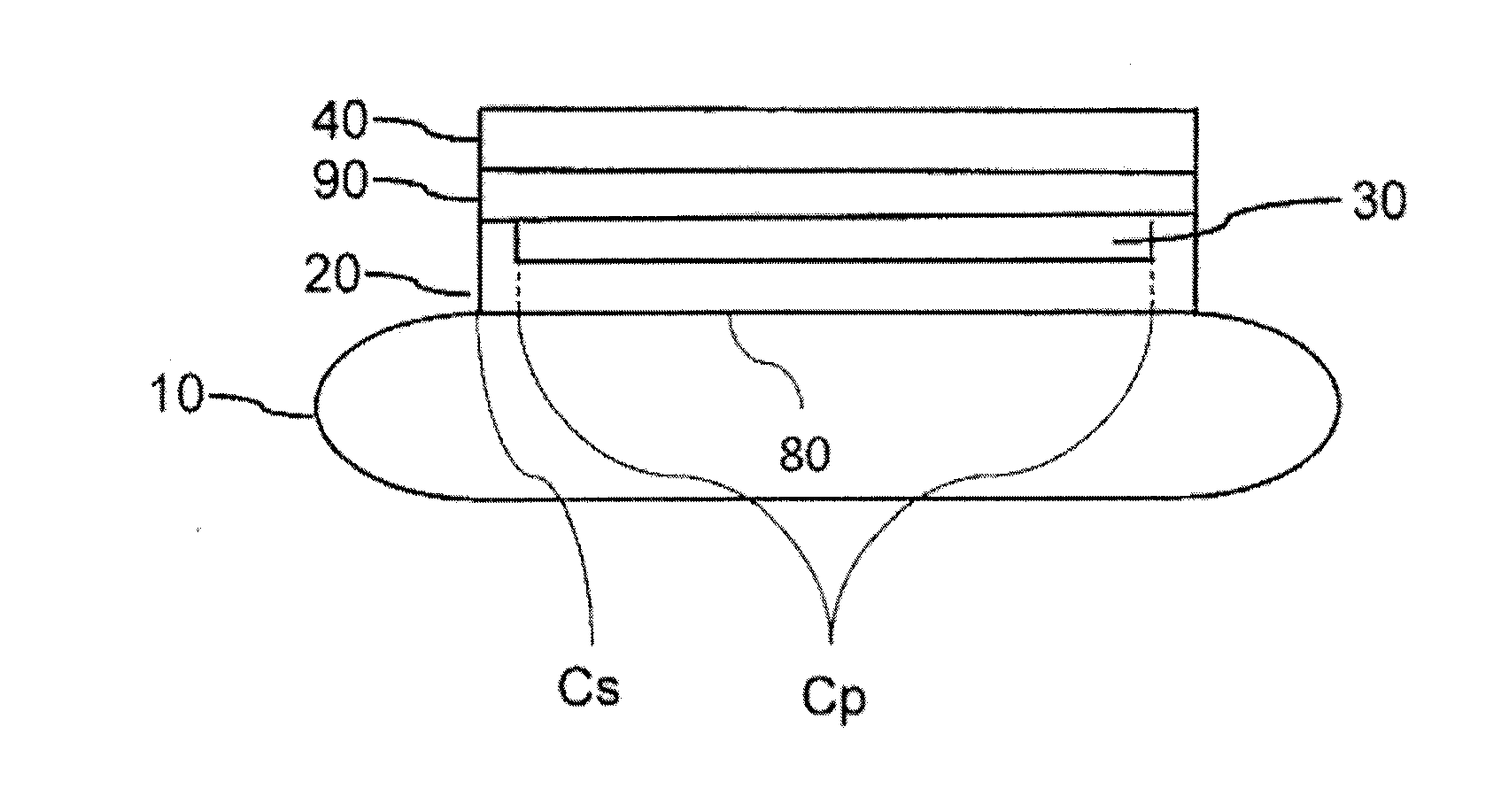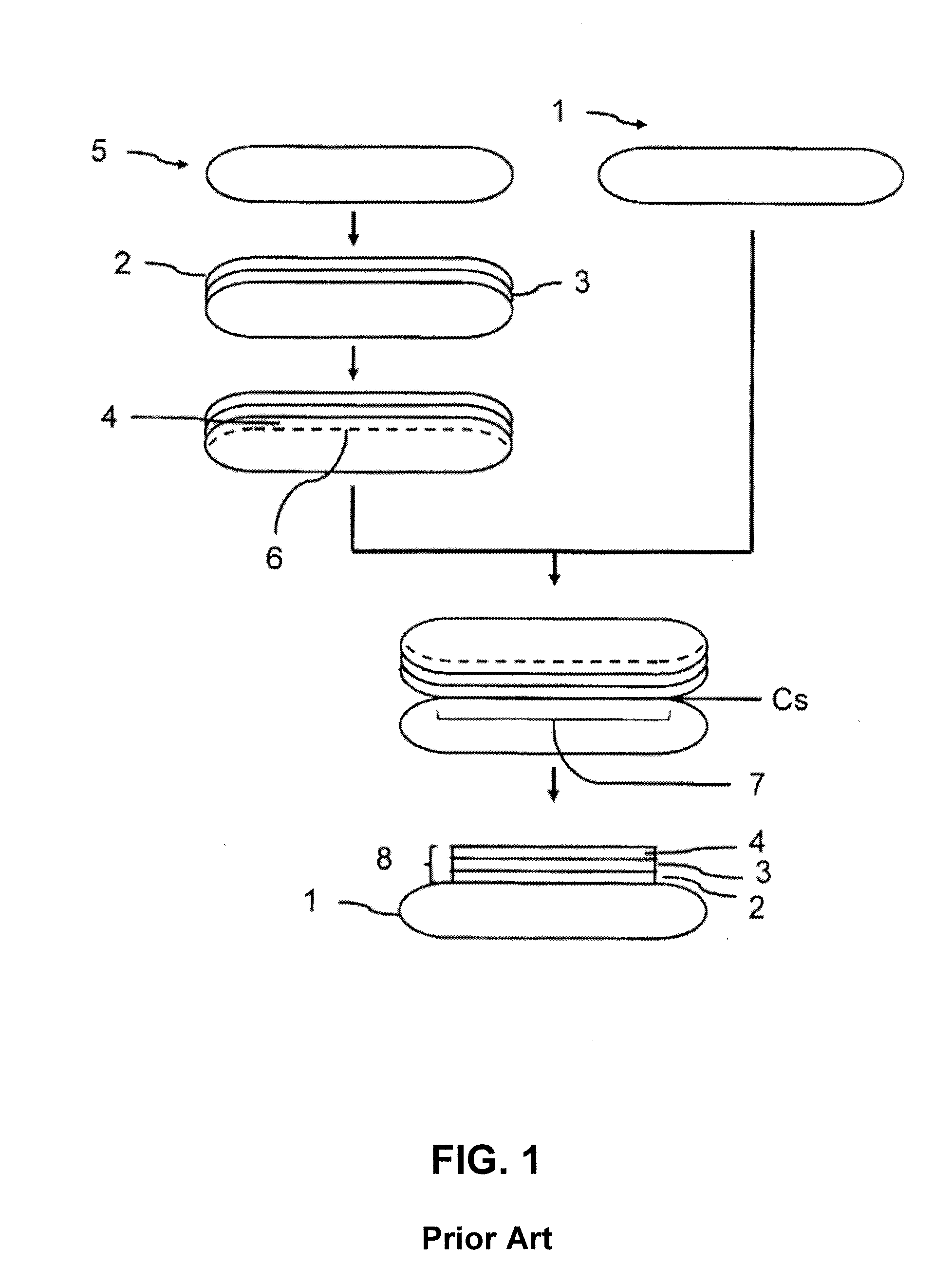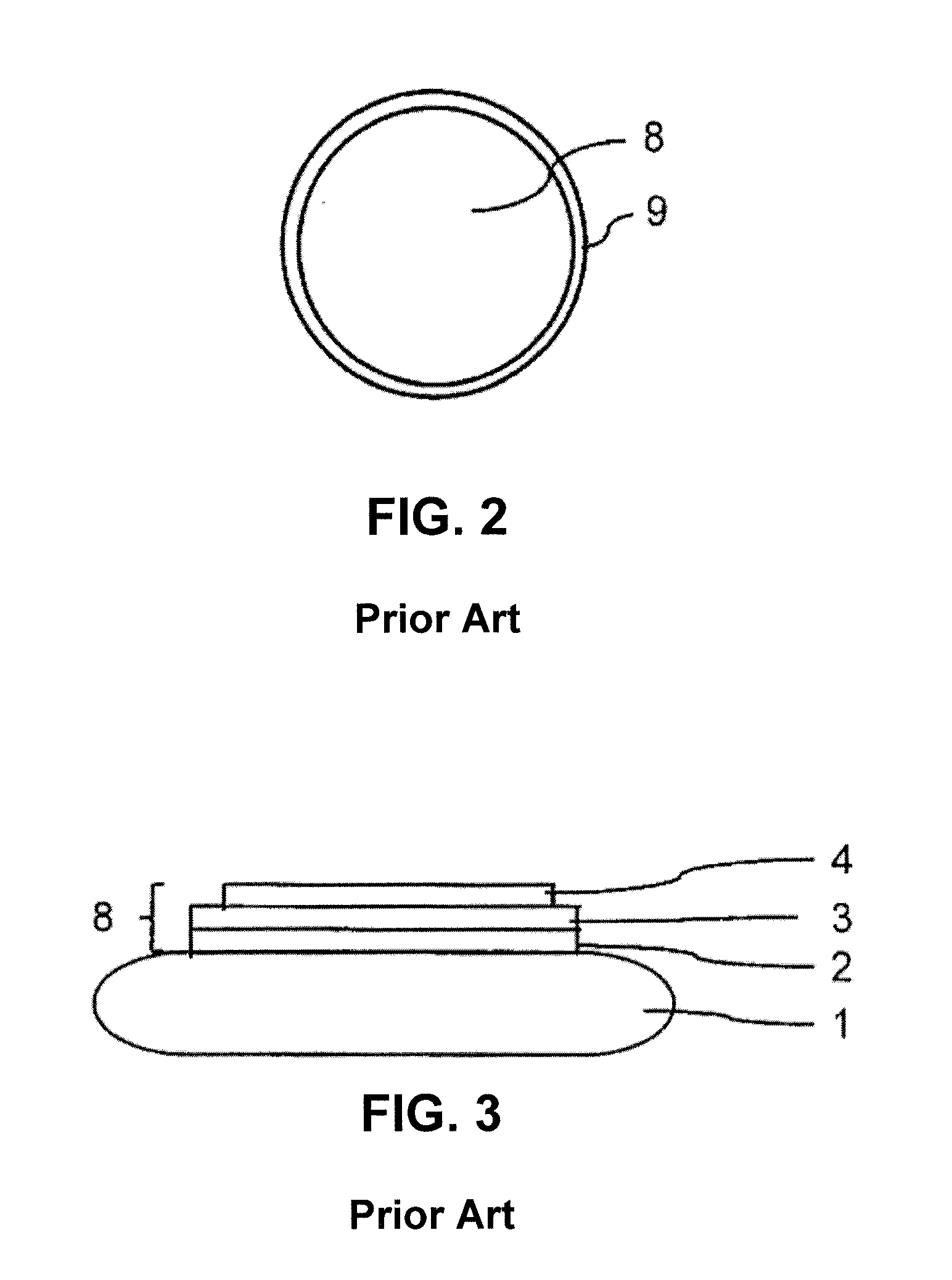Process for manufacturing a composite structure
- Summary
- Abstract
- Description
- Claims
- Application Information
AI Technical Summary
Benefits of technology
Problems solved by technology
Method used
Image
Examples
first embodiment
[0138]The first embodiment is illustrated in FIGS. 4A and 4B.
[0139]Formation of the Dielectric Layer 30
[0140]The dielectric layer 30 may be formed in two steps:[0141]b1) formation of a layer of dielectric material of the donor substrate 10;[0142]b2) partial removal of the layer of dielectric material so that the residual layer of dielectric material forms the dielectric layer 20.
[0143]Step b1) may be a technique of vapor deposition, low-pressure vapor deposition or plasma-assisted vapor deposition on the donor substrate 50. It may also be a heat treatment technique in a chosen atmosphere (nitriding, oxidation, etc.).
[0144]The thickness of the layer of dielectric material may be between 10 nm and 80 nm, for example, 50 nm.
[0145]Step b1) is then followed by a step b2), which comprises a partial removal of the layer of dielectric material. The partial removal is executed so that the remaining or residual portion of the layer of dielectric material constitutes the dielectric layer 30.
[0...
second embodiment
[0171]The second embodiment, illustrated in FIGS. 6A and 6B, differs from the first embodiment in that the donor substrate 50 comprises an additional layer 90, the additional layer 90 being in contact with the dielectric layer 30, the additional layer 90 having the same chemical composition as the covering layer 20.
[0172]For example, the additional layer 90 and the covering layer 20 comprise silicon oxide.
[0173]The additional layer 90 is formed directly on the donor substrate 50, before the dielectric layer 30.
[0174]The additional layer 90 may comprise a material, different from the materials of the dielectric layer 30, selected from the following materials: silicon oxide, silicon nitride or oxynitride, aluminium nitride, aluminium oxide, polycrystalline silicon and amorphous silicon.
[0175]Advantageously, the additional layer 90 is made from silicon oxide and its thickness is between 2 nm and 20 nm, for example, 7 nm.
[0176]When the donor substrate 50 is made from silicon, the additi...
PUM
 Login to View More
Login to View More Abstract
Description
Claims
Application Information
 Login to View More
Login to View More - R&D
- Intellectual Property
- Life Sciences
- Materials
- Tech Scout
- Unparalleled Data Quality
- Higher Quality Content
- 60% Fewer Hallucinations
Browse by: Latest US Patents, China's latest patents, Technical Efficacy Thesaurus, Application Domain, Technology Topic, Popular Technical Reports.
© 2025 PatSnap. All rights reserved.Legal|Privacy policy|Modern Slavery Act Transparency Statement|Sitemap|About US| Contact US: help@patsnap.com



